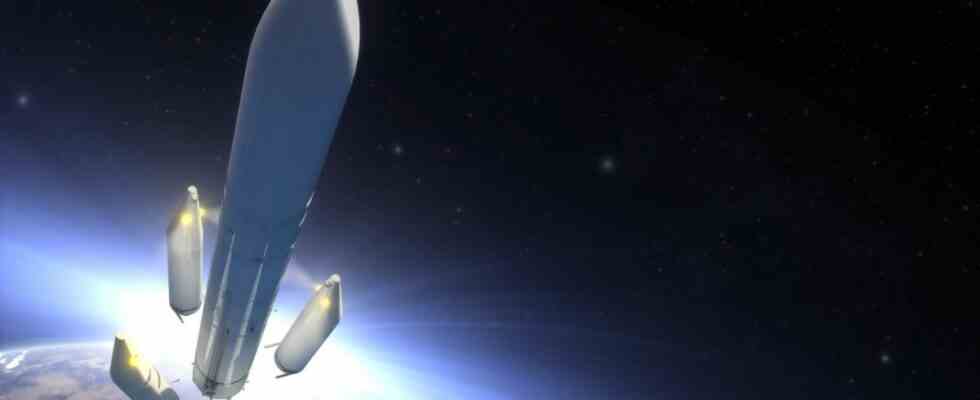A week ago they celebrated at the Airbus Group – for the first launch of the new Nasa moon rocket SLS there was a small event at the Bremen site. There, where they have been the supply part for the astronaut capsule for several years Orion the US space agency build that on top of SLS sits: the European Service Module ESM measures 5.2 meters in diameter and four meters in height, weighs a good 14 tons and has 12 kilometers of cable installed. It supplies the astronauts with energy, oxygen and water, among other things. Astronauts are expected to use it to set off for the moon in 2025, and the first capsule with technology from Bremen is currently orbiting the moon – still without a crew.
At the European space agency Esa, they are proud that NASA has awarded the contract for such an important module to Europe. So far, there are six modules that are financed by Esa, more are to follow. They are also the entry ticket for European astronauts into the Artemis lunar program. The Esa is therefore already allowed to send three astronauts at least to the future Lunar Gateway, a small space station on the moon, where the moonwalkers will later change to the lunar module. ESA boss Josef Aschbacher also hopes that Europeans will be able to land on the moon as part of an Artemis mission at the end of the decade.
The moon also played a major role at this year’s ESA Ministerial Council meeting in Paris. Government representatives from the 22 member countries meet every three years to discuss the budget. Aschbacher was able to announce on Wednesday that the Esa in the next three years 16.9 billion euros available for space missions – around 17 percent more than in 2019. Germany remains the main contributor with 3.5 billion euros and has thus increased its Esa contribution by almost seven percent – which is less than the current inflation. After all: In the previous Berlin draft budget, 2.8 billion euros were set.
As for the moon, Paris was also about the El3 planned by Esa. Of the European Large Logistics Lander should be able to transport up to 1.7 tons of cargo from the earth to the moon by the end of the decade in order to support astronautical and robotic missions and, for example, to set up a lunar station. The companies Airbus and Thales Alenia Space have been commissioned with studies for the lander, and the Bremen space company OHB is also involved. Under the name “Moonlight”, Esa also wants to get another moon project off the ground, which involves positioning satellites for navigation and internet signals around the moon. Two industry consortia, which also include Airbus, OHB and Thales Alenia Space, are currently working on concepts.
Small rockets should get Esa orders
But Esa also wants to invest in the infrastructure for the earth: the third generation for the navigation satellite network Galileo and the broadband constellation Iris² of the EU are on the to-do list. The EU had already pledged 2.4 billion euros, with additional money to come from industry. Esa also wants to provide funds to launch the launcher Ariane 6 further developed and made reusable. Another important point was to open up small rockets from start-ups such as Isar Aerospace, RFA or Hyimpulse for ESA orders. “Start-ups are now welcome to bring Esa payloads into orbit,” said Walther Pelzer, head of the DLR space agency.
Economics Minister Robert Habeck had also traveled to Paris to take over the chair of Esa as scheduled. The Green politician pointed out that space travel is important for security, climate protection and sustainability. For example, data from space could be used for environmental protection. Space must be more open to competition so that smaller companies can also benefit, he said: “We shouldn’t nationalize space.”

